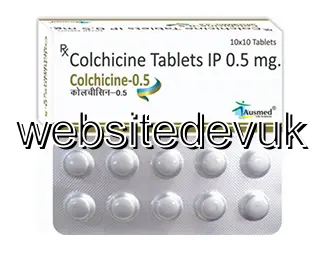Buy Autumn Crocus (Colchicum Autumnale) UK
| Package | Dosage | Price | Price per Dose | |
|---|---|---|---|---|
| Dosage: 0,5mg | ||||
| 270 pill | 0,5mg | £158.25 | £0.59 | |
| 360 pill | 0,5mg | £154.35 | £0.43 | |
| 180 pill | 0,5mg | £133.83 | £0.74 | |
| 120 pill | 0,5mg | £117.22 | £0.98 | |
| 90 pill | 0,5mg | £100.61 | £1.11 | |
| 60 pill | 0,5mg | £78.15 | £1.30 | |

Autumn Crocus Description
Introduction to Autumn Crocus
The Autumn Crocus, scientifically known as Colchicum autumnale, is a decorative plant renowned for its stunning blooms that appear in late summer to early autumn. Native to southern Europe, particularly the Mediterranean region, this plant has been used for centuries for its potent medicinal properties. It is closely related to the Crocus genus but is distinguished by its unique flowering period and toxicity profile. The primary active compounds derived from the plant are alkaloids, most notably colchicine, which plays a central role in its medicinal applications.
Medicinal Uses and Therapeutic Benefits
Extracted from the Autumn Crocus, colchicine has a long-standing history in medicine. It is primarily used to treat gout, a condition characterized by severe joint inflammation caused by uric acid buildup. By reducing the inflammation and preventing crystal formation, colchicine provides relief for many patients suffering from gout attacks.
Besides gout, colchicine has been explored in the treatment of familial Mediterranean fever (FMF), an inherited inflammatory disorder. Its anti-inflammatory properties help prevent the recurrent fever episodes and associated symptoms in affected individuals. Additionally, colchicine has shown potential in managing other inflammatory conditions, such as certain pericarditis cases and Behçet’s disease.
In recent years, research has focused on the relationship between colchicine and its potential in reducing cardiovascular events, such as heart attacks, by addressing underlying inflammation. However, these uses are still under investigation, and medical supervision is essential when considering colchicine therapy.
How the Medication Works
Colchicine operates by interfering with the process of cell division and reducing the activity of neutrophils, a type of white blood cell involved in inflammatory responses. It binds to tubulin, a structural protein inside cells, disrupting microtubule formation. This disruption inhibits the movement and activity of inflammatory cells, thereby alleviating swelling, redness, and pain associated with inflammatory conditions.
The drug's effectiveness depends on precise dosing, as it acts rapidly to suppress inflammation but can be toxic if misused. It is important for patients to follow medical guidance closely to maximize benefits and minimize side effects.
Safety and Side Effects
Although colchicine derived from Autumn Crocus can be highly effective, it also bears significant risks if not administered properly. The toxicity of colchicine is well-documented. Common side effects include gastrointestinal symptoms such as nausea, vomiting, diarrhea, and abdominal pain. These are often dose-dependent and may indicate the need to adjust the dosage.
More serious adverse reactions involve liver and kidney toxicity, blood dyscrasias, and neuromuscular symptoms. Overdose can lead to severe complications, including multiorgan failure, and can be fatal. Therefore, strict adherence to prescribed doses and regular monitoring by healthcare professionals are vital when using colchicine-based medications.
It is crucial for patients to inform their doctor about any pre-existing conditions, allergies, or concurrent medications, as colchicine can interact with other drugs, increasing the risk of adverse effects. Pregnant and breastfeeding women should avoid this medication unless specifically directed by their healthcare provider.
Conclusion
Autumn Crocus, through its active compound colchicine, remains an important medicinal ingredient, especially in the management of gout and inflammatory conditions. Its potent anti-inflammatory properties make it valuable, but its narrow therapeutic window requires careful medical supervision. Proper dosing and monitoring are essential to avoid toxicity and maximize therapeutic outcomes. While the plant's natural origin is appealing, it is important to remember that the extracted medication should only be used under professional guidance to ensure safety and effectiveness. The continued research on colchicine's benefits holds promise for broader medical applications in the future.